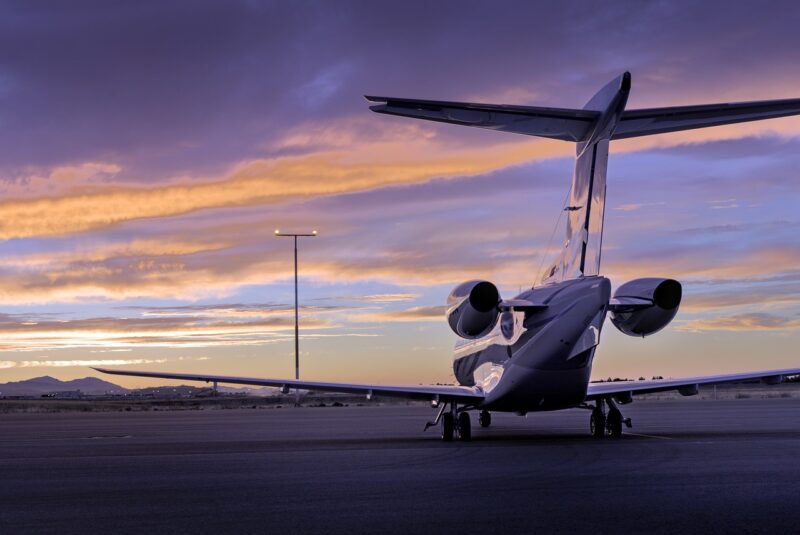Why Modern Jets Are So Much Safer Than Planes of the Past
November 11, 2024

Flying is one of the safest modes of transportation today, outperforming many other travel options when it comes to security. The evolution of aviation technology, robust safety protocols, and comprehensive training programs have made modern jets significantly safer than the planes of yesteryears. In this article, we will explore the key advancements that have contributed to the enhanced safety of modern jets and how they compare to older aircraft.
1. Technological Advancements in Design and Engineering
Modern aircraft encompass a plethora of advanced technologies that have transformed aviation safety. Here are some noteworthy innovations:
- Fly-by-Wire Systems: In contrast to traditional mechanical flight controls, many modern jets are equipped with fly-by-wire systems, where electronic signals control the aircraft. This technology dramatically enhances control accuracy and reduces the pilot’s workload. It allows computers to assist pilots in making real-time adjustments to maintain stability, preventing many accidents caused by pilot error.
- Advanced Materials: Modern jets are constructed from composite materials that are lighter and stronger than the aluminum used in older aircraft. This not only improves fuel efficiency but also enhances structural integrity, making them more resilient during adverse conditions.
- Enhanced Avionics: Newer jets feature sophisticated avionics systems that provide real-time data on weather, navigation, and aircraft health. These systems include predictive analytics that can foresee potential flight hazards, giving pilots ample warning to take preventive action.
These technological advancements have reshaped the landscape of commercial aviation, providing a safer experience for passengers.
2. Stringent Safety Regulations and Oversight
Regulatory bodies such as the Federal Aviation Administration (FAA) in the United States and the European Union Aviation Safety Agency (EASA) have established rigorous safety standards that aircraft manufacturers must meet before a plane can be certified for commercial use. Here’s how these regulations contribute to aviation safety:
- Thorough Testing and Certification: Modern jets undergo extensive testing and evaluation processes that are far more stringent than those for older aircraft. These processes include crash tests, system redundancies, and operational assessments in various scenarios, ensuring that every aspect of the aircraft has been evaluated under stressful conditions.
- Regular Maintenance Checks: The FAA and EASA mandate regular servicing and maintenance checks for airlines to ensure that their fleets comply with safety standards. This includes thorough inspections, routine upgrades, and occasional overhauls of critical systems, reducing the chance of mechanical failure.
- Global Collaboration: International collaboration allows airlines and regulatory authorities to share critical data about incidents and technical failures. This shared knowledge helps in establishing preventive measures, expanding the safety net across the industry.
Regulatory oversight has played a crucial role in making sure that modern jets adhere to the highest standards of safety.
3. Pilot Training and Crew Resource Management
Pilot training has evolved significantly over the years. Modern flight training programs focus extensively on safety procedures and effective communication among crew members, known as Crew Resource Management (CRM).
- Simulator Training: Pilots today undergo extensive simulator training that replicates real-world emergency scenarios. This hands-on experience is invaluable, allowing pilots to practice their response to various emergency situations without risk. The data gathered from these simulations help refine training programs further, enhancing safety in actual flights.
- Human Factors Training: Training now includes modules on human factors such as decision-making, teamwork, and stress management. This training ensures that pilots are equipped to handle emergencies effectively, thus reducing the likelihood of accidents caused by human error.
- Standard Operating Procedures (SOPs): Flight crews now follow standardized procedures for virtually every aspect of their duties, from takeoff to landing. These procedures increase consistency and safety, as crew members are less likely to make errors when following established protocols.
Pilot training has transformed from a basic skill set to an intricate program emphasizing the importance of safety in every flight.
4. Enhanced Emergency Systems
Modern jets come equipped with advanced emergency systems designed to manage in-flight emergencies more efficiently than planes of the past.
- Advanced Fire Suppression Systems: Modern aircraft have sophisticated fire suppression systems that can detect and extinguish fires in critical areas of the plane. These systems often utilize advanced sensors and materials that significantly mitigate fire risks onboard.
- Improved Evacuation Protocols: Many modern jets feature multiple exits, slide-based evacuation systems, and lighting that directs passengers during emergencies, ensuring a swift and safe evacuation. Extensive drills conducted by cabin crews ensure preparedness for any potential emergency situation.
- Backup Systems: From power loss to instrument failure, modern aircraft are equipped with backup systems that take over in case of primary system failure. These redundancies are vital in ensuring the continued safety and functionality of the aircraft in emergencies.
These significant enhancements have ensured that modern jets are prepared for unexpected challenges, making them safer than ever.
5. Data Monitoring and Predictive Maintenance
One of the most exciting developments in aviation safety is the utilization of data monitoring and analytics to predict and prevent technical failures. This involves:
- Real-Time Data Transmission: Modern jets collect vast amounts of data regarding engine performance, system health, and environmental conditions, sending this data to ground control in real-time. This continuous monitoring allows airlines and technicians to identify potential issues before they escalate into serious problems.
- Predictive Maintenance Algorithms: Airlines leverage advanced analytics to predict when components are likely to fail. By addressing maintenance needs proactively, airlines can reduce the chances of in-flight malfunctions significantly.
- Incorporating Big Data Analytics: By harnessing big data, airlines can review past incidents, crew reports, and mechanical failures to extract insights. This data helps in making informed decisions to improve safety protocols and operational procedures continuously.
The integration of advanced monitoring and predictive systems helps ensure issues are addressed before they become critical, minimizing risks to passengers and crew alike.
Conclusion
The advancements in technology, regulatory standards, pilot training, emergency preparedness, and data analytics have collectively worked towards establishing modern jets as one of the safest forms of transportation available. As the aviation industry continues to innovate and adapt, we can expect even more improvements in safety, allowing travelers to have confidence in air travel. Flying is an incredibly safe activity, allowing millions of passengers to reach their destinations with peace of mind, and it’s vital to understand that these advancements are a direct result of learning from the past.
Embracing these enhancements ensures that flying remains not only a vital mode of transport but also a safe and reliable one as we look toward the future of aviation.






